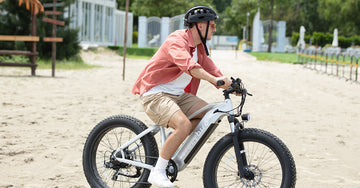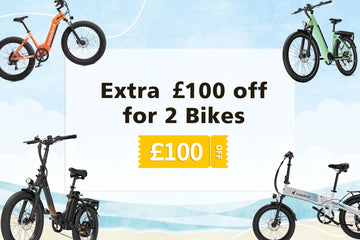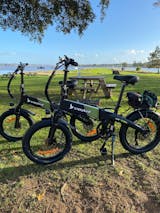Cycling is a joyful and environmentally responsible type of transportation that has grown in popularity recently. But it's crucial to keep in mind that riding a bicycle can be risky as well. There was a decrease in bicycle accident deaths for over ten years. Nonetheless, new research indicates that the number of fatal bicycle accidents is rising. In 2022, 3260 people died on public roads in France, compared to less than 3000 in the previous two years. A lot of money is spent on equipment by cyclists. Every piece of equipment, from saddles and chamois to jerseys and cleats, has a specific function. However, arguably none of them; wearing a helmet is the best method to keep yourself safe when cycling.
To obtain a deeper understanding of this important subject. We'll talk about the advantages of wearing a
motorcycle helmet when riding, as well as some other crucial bike safety issues. Our intention is to raise readers' knowledge of this problem and motivate them to put their own safety first when riding a bicycle.
The E-Bike Laws in Different Countries, 2024
-
Motor-Restriction:
E bikes used in the UK outside of private property are only permitted to run at a maximum continuous rated power of 250W and cannot give powered assistance faster than 25 km/h.
-
Age-Restriction: The minimum age to ride is fourteen years old.
*
You must wear an authorized motorbike helmet in Northern Ireland in order to ride an electric bike legally.
-
Age-Restriction: In France, it is illegal for anyone under the age of 14 to operate an electric bicycle on a public road. Age restrictions of this kind do not apply to riding on private property or off-road cycling.
-
Power-Assisted-Restriction: The engine's rotational speed cannot be greater than 250W; The electric motor's assistance must only run until the speed reaches 25 km/h; Pedal assistance must only start when the rider is pedalling and must stop on its own when the rider stops pedalling.
*Higher power-assisted cycles with top speeds of 45 km/h are regarded as electric mopeds, and their use on public roads requires the wearer to possess a valid driver's license, insurance, and appropriate protection gear, such as gloves and a helmet.
-
The-Need-for-Helmet-Wearing: In France, it is mandatory for riders under the age of twelve to wear a cycling helmet. However, for your own protection, it is advised that elderly bikers use one. A CE label, indicating compliance with EU rules, is mandatory for helmets sold in France.
-
Speed Restriction: e-bikes are only allowed to reach 25 km/h in Germany.
-
Reflector-Needed: a red reflector in the back (which can be blended with the light) and a white reflector at the front.
-
Accessories needed: front and back-wheel brakes; a bell; a front light; and a red backlight.
-
Cycling-Range-Restrictions: use the dedicated bike lanes to cycle. Mandatory cycling paths are indicated by round, blue signage featuring a white bicycle. Adults are not permitted to ride their bicycles on the sidewalk unless there is a designated bike lane; instead, you must ride your bikes on the road alongside traffic. Cycling on the right side of the road is a requirement. Larger pedestrian zones are typically seen in German city centres. You must get off your bike and push it through this region, as you are not permitted to ride through it.
Helmets' Function in Preventing Head Injuries
Some riders find it difficult or cumbersome to wear helmets. Some riders may find helmets annoying when attempting to lock up their bike or take it on public transportation since they can be bulky, hot, and humid.
But in bicycle accidents, wearing a helmet is essential to preventing head injuries. According to the study, GITNUX MARKETDATA REPORT 2024, it is possible to prevent 78% of kid bike-related head injuries by wearing a helmet. Bicycle helmets reduce the risk of brain injuries by 48%, serious head injuries by 60%, and face injuries by 23%.
Shielding the Skull Against Harm
Wearing a helmet can protect against head injuries in the event of an accident, which is the benefit mentioned above. Wearing a helmet can lower your chance of suffering a serious or perhaps fatal head injury.
Enhanced Visibility
The reflective materials used in many cycling helmet designs can improve visibility and make it simpler for cars to detect cyclists on the road. This can be crucial when riding a bicycle at night or in dimly lit areas.
A Boost in Self-Assurance
Because they have an additional layer of safety, bikers who wear helmets tend to ride with greater confidence.
Things to Consider When Purchasing a Helmet
You may want to conduct some research to determine what you actually need before purchasing a helmet. Which kind of helmet should you purchase? What should you watch out for when making the appropriate choice? Does it have to be attractive? Let's gather some helpful knowledge and increase the safety of our motorcycle travel.
-
Helmet Shape
Since every person's head is slightly different, helmets are available in three different shapes: round oval, intermediate oval, and long oval. Even though most people have a head that is somewhere in the round-to-oval range, it's crucial to know your precise shape before purchasing a helmet. Utilize a mirror or ask a buddy to take a top-down view of your head. Don't forget to pay attention to the contour of your head rather than your face.
-
Helmet Size
To make sure the helmet fits properly, you must measure the circumference of your head and verify the size. To accomplish this, simply start about 2 cm above your brow line and wrap a tape measure around the largest area of your head. If you were to hang upside down without the retention mechanism, the helmet should fit tightly enough to stay in place.
-
Helmet Style
Mountain bike helmets cover more of the back of your head and typically have a broader visor to block off elements such as rain, sun, and tree branches. Chin guards are a feature of certain MTB helmets designed for aggressive riding.
Although they won't weigh as little as a road bike helmet, they are made to better shield you from the kinds of collisions that occur more frequently when mountain biking.
Road bike helmets are made to be lightweight and aerodynamic to increase speed. They usually don't include visors because most serious road and gravel riders will usually choose a cycling cap in the event that a visor is required. Large ventilation patterns that keep you cool while you rack up the miles are another common feature.
These helmets give motorcyclists exactly what they want—a comfortable, safe helmet—and are typically extremely reasonably priced.
When to Get a New Bicycle Helmet
Bike helmets should not be worn following a significant crash because they are made to withstand the forces of a single hit. You ought to replace the helmet even if there isn't any visible damage. Regardless of whether you have been in a crash or not, it is also a good idea to update your bike helmet after a few years of use.
One of the most crucial things a rider can learn is the importance of wearing a helmet. Make sure your helmet is secure and safe before you ever go on a ride. It might well save your life.



















